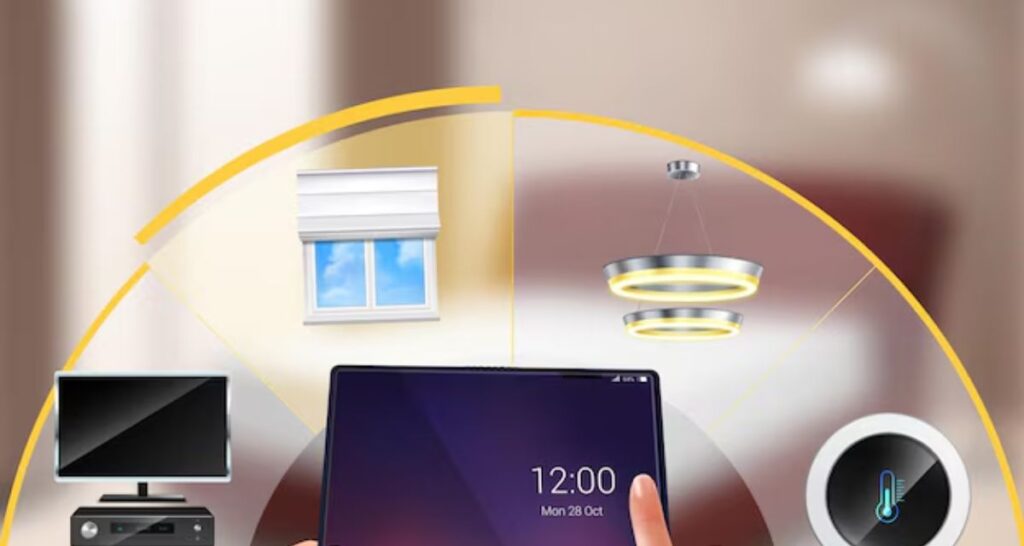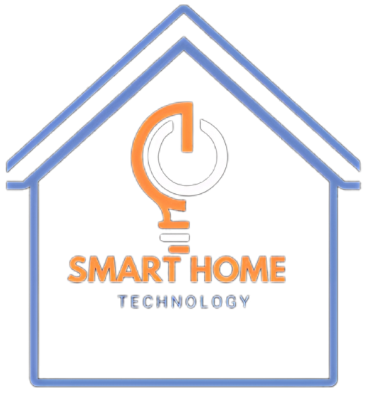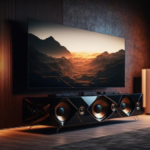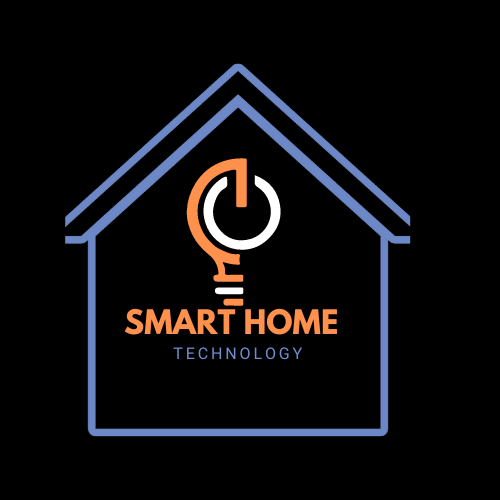Table of Contents

Are home automation and smart home the same? The involvement of technology has innovatively changed how we live and interact with our homes.
The global smart home market in the U.S. has projected a reach of over $207 billion in 2026, with nearly 60% of U.S. households expected to take on smart home technologies in 2025. However, while terms like “smart home” and “home automation” are often used, they represent their own specific concepts and are applied to different devices and functions.
These two terms have caused a lot of confusion in the home technology sector. Smart home focuses on how smart devices are connected to each other actively, while home automation emphasizes computing specific functions or processes within the home. Below we will look at what each term stands for, the examples of devices and equipment that fall under them, their benefits, how they work and factors to consider when choosing for your home.
What is a Smart Home?
A smart home is a home that is equipped with internet-connected devices that can be controlled using a remote or a voice assistant. A smart home blends with technology in how day-to-day living is done, creating a convenient lifestyle that is well connected.
The smart devices are utilized by Internet of Things (IoT) technology that allows them to be able to communicate via applications (apps), hubs or voice assistants.
Examples of a Smart Home
These are smart devices that make a smart home; without these devices, we can’t setup a smart home.
- Smart Lighting: It controls lights remotely or sets schedules for when they turn on/off.
- Smart thermostats: This adjusts the home temperature settings based on preferences or schedules.
- Smart Speakers: It allows devices like Amazon Echo or Google Nest to enable voice control and multimedia functions.
- Smart Appliances: Refrigerators, ovens, and washing machines that can be managed through apps.
- Smart Security Cameras: It monitors your home in real time from anywhere.
- Smart Door Locks: This promotes security with keyless entry and monitoring.
- Smart Plugs: it manages the power usage of devices through mobile apps.
- Smart Sensors: It can detect motion, smoke, or leaks for safety.
- Smart Entertainment Systems: It allows streamlined control over TVs, speakers, and gaming systems.
- Smart Hubs: It centralizes systems that connect multiple devices for easy management.
How Does a Smart Home Work?
Having a better understanding of how smart home work can help you to appreciate its ability to positively impact our daily lives:
A smart home runs by connecting various devices to a central hub via Wi-Fi or Bluetooth. These devices, when connected, can be able to communicate with each other and can be effectively controlled through a smart phone app, a voice assistant, or a central hub.
For example, a smart home owner can turn on the light, check the smart security cameras, and adjust the thermostats remotely through an app.
This is a convenience that a smart home provides. With the aid of artificial intelligence (AI), it promotes the functions of the smart devices by allowing it to be able to predict adaptive behaviours like adjusting lighting based on time of day or temperature based on occupancy patterns.
Benefits of a Smart Home.
The benefits of smart homes are beyond the convenience it give. Here are other valid benefits it provides to its users to promote quality of life and efficiency:
- Convenience: It allows users to control multiple devices with ease, whether through a single app or voice commands, simplifying daily tasks.
- Energy Efficiency: It gives room for devices like smart thermostats and lighting help reduce energy consumption by optimizing usage based on your habits.
- Enhanced Security: The smart cameras, locks, and sensors provide real-time updates and alerts, ensuring your home’s safety.
- Customizable Experience: Users can set up the device settings and schedules to fit their routines and preferences.
- Scalability: Smart homes allow you to add new devices ideally as your needs grow.
- Remote Access: It controls and monitors your home from anywhere using your smartphone or other devices.
- Cost Savings: Energy-efficient devices can lead to significant savings on utility bills over time.
- Improved Comfort: Smart thermostats and appliances ensure your living environment is always set to your liking.
- Entertainment Integration: It allows you to be able to sync your music, TV, and gaming devices for a cohesive multimedia experience.
- Health Monitoring: Some smart homes include features like air quality sensors or reminders for medication and health routines.
What is Home Automation?
Home automation refers to the use of technology that creates automated systems that handle and operate a particular task without the use or requirement of a manual input. Unlike smart homes that focus on connected devices or which require communication through applications or voice commands, home automation runs on preplanned routines. According to the America global market in 2023, that is an expectancy of value of over $74 billion by 2025, reflecting the increasing demand for interconnected, intelligent devices that go beyond simple automation.
Home automation has been in existence for a long time; it makes life very convenient and active for users to be able to control their home system without having to control manually. They include air conditioners, refrigerators, security systems, lighting fixtures and thermostats. They all contain a central unit that is connected to various things that allow it to interact with multiple parts of the home.

Photograph: Freepik
Examples of the Home Automated Devices:
Here are examples of home automated devices that, when connected without the requirement of manual input, would connect to various parts of the home:
- Scheduled Lighting: It automatically adjusts the lighting based on the time of day or presence in a room.
- Thermostat Automation: This changes the temperature settings according to weather or occupancy.
- Automated Blinds and Curtains: It opens and closes based on sunlight or schedule.
- Integrated Security Systems: Lock doors, arm alarms, and monitor activity automatically.
- Voice-Activated Routines: It triggers multiple actions with a single command (e.g., “Good Night”).
- Appliance Automation: It can run dishwashers or washing machines during off-peak hours.
- Irrigation Systems: Water gardens based on soil moisture and weather forecasts.
- Energy Monitoring Systems: It optimizes energy usage to reduce waste.
- Presence Detection: It can activate or deactivate systems based on who is home.
- Custom Scenes: This combines multiple automation tasks for specific events (e.g., movie night settings).
How Does Home Automation Work?
It is important you know how home automation works; your understanding of how it operates would help you see how they make life efficient and convenient.
Home automation works by incorporating sensors, controllers, and actuators all into a unified system that automates tasks based on schedules.
The sensors are able to detect changes in the environment, such as a change in light, motion or temperature, while the controller processes the information and sends commands to the actuators, which execute the tasks, like dimming lights, closing curtains or turning on the refrigerator.
All these are managed by the central or software platforms, allowing them to perform complex routines such as ‘away mode’, where multiple systems adjust to conserve energy and secure the home when no one is around.

Photograph: Freepik
Benefits of Home Automation.
The benefits of home automation are very impactful for our everyday lives. It offers ideally a great experience by eliminating manual intervention for recurring tasks.
Here are other advantages of home automation:
- Time-Saving: The automated routines can handle repetitive tasks, freeing up time for more critical activities.
- Energy Efficiency: The computerized systems are able to optimize power usage by running appliances during non-peak hours or turning off unused devices.
- Enhanced Security: The predictive features, like automatically locking doors or arming alarms when you leave, ensure your home’s safety.
- Convenience: It requires minimal manual intervention to be able to run tasks logically in the background.
- Customizable Routines: The automation lets you create workflows tailored to your daily habits, like setting lights and temperature for bedtime.
- Sustainability: Automated systems contribute to a greener lifestyle by reducing unnecessary energy consumption.
- Predictive Maintenance: Automation can detect potential issues in devices or systems, preventing costly repairs.
- Comfort Optimization: The automation adjusts temperature, lighting, and other settings to maintain a cozy environment.
- Seamless Integration: The automated systems can connect to various devices to work together harmoniously.
- Improved Safety: The automated systems can alert you to dangers like fires, leaks, or intrusions instantly.
Differences between the Smart Home and Home Automation.
The home technology ; Smart home and home automation, have something in common, which is to improve the standards of living, but their focus and approaches both differ. Here, we would look at their differences for a better understanding of what each contributes to the improvement of a better life:
The Future Trends in Smart Home and Home Automation.
The future of smart homes and home automation will give an output of advancement, driven by AI, IoT, and sustainable technologies. Here are trends that would be integrated in the future:
- AI-Driven Personalization: An advanced AI algorithm will enable homes to learn user preferences and adapt automatically.
- 5G Integration: It is faster, and more reliable connectivity will enhance the performance of smart devices.
- Energy Sustainability: The innovations in green technology will reduce carbon footprints.
- Voice Control Advancements: Improved voice assistants will offer more natural interactions.
- Integration of AR and VR: The augmented and virtual reality applications for home design and entertainment.
- Enhanced Security Features: Advanced biometric systems for access control and monitoring.
- Interoperability: It increases compatibility among devices from different manufacturers.
- Health-Focused Features: Devices that monitor and improve indoor air quality and personal wellness.
- Smart Cities Connectivity: Homes that integrate seamlessly with smart city infrastructure.
- Affordable Automation: Cost reductions will make advanced systems more accessible.
Which One Should You Choose?
Selecting between a smart home and home automation depends on your budget, technical comfort, and budget. They both offer a great advantage: to give you quality conveniences that align with your specific needs.
Here are valid tips that could help you select the one that suits your home:
- Budget: The smart home devices are generally cheaper than complete automation systems.
- Lifestyle: You can choose smart homes for hands-on control; opt for automation for convenience.
- Technical Skills: Home automation may require professional installation.
- Energy Efficiency Goals: Home automation excels in reducing waste.
- Security Needs: Automation logically predicts proactive systems.
- Scalability: Smart homes offer easier expansion.
- Preferred Experience: Enjoy interactive experiences with smart homes.
- Maintenance: Automation systems may require higher maintenance costs.
- Future-Proofing: Automation can adapt to more comprehensive integrations.
- Time Investment: Smart homes are quicker to set up and use.
Conclusion
Smart homes and home automation are innovating our standard living by offering convenience, quality, efficiency and comfort. These two both serve the same purpose but have different ways they execute it. Home automation systems need more work when trying to set up or install, most times you might need a professional to help you with it, while Smart homes can be set up quickly but require a stable internet connection to function well. By understanding how effectively the smart home and home automation work, you would be able to create a great space that suits you and your ideal home.
Frequently Asked Questions
It is important you know the answers to these frequently asked questions that are often asked on the internet. Here are valid answers to these questions to help you understand better about the difference between a smart home and home automation:
- What is the difference between a smart home and home automation? A smart home focuses on connected devices, while home automation emphasizes automated systems and routines.
- Can a home be both smart and automated? Yes, combining smart devices with automation systems can offer the best of both worlds.
- How much does it cost to set up a smart home vs. home automation? Smart homes are generally more affordable, starting at a few hundred dollars, while home automation systems may cost thousands.
- Which is more energy-efficient: smart homes or home automation? Home automation typically excels in energy efficiency by reducing waste through programmed routines.
- Do I need technical expertise to set up home automation? Yes, home automation often requires professional installation and setup.
- What are the best smart home devices? Popular options include Amazon Echo, Google Nest, Philips Hue, and Ring Doorbell.
- Is home automation suitable for renters? Home automation systems may not be ideal for renters due to installation complexity.
- Can I integrate smart home devices into an automation system? Yes, many smart devices can be incorporated into broader automation systems.
- Are smart homes secure? With proper measures like strong passwords and secure networks, smart homes are relatively safe.
- How can I get started with smart homes or automation? It begins with a basic smart hub and expands gradually, or consult a professional for tailored automation solutions.


